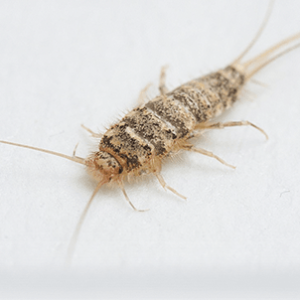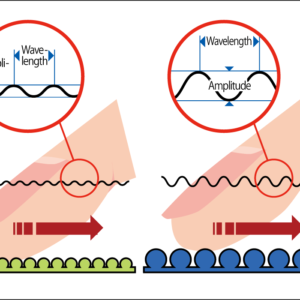Male or female? Sex represents a major characteristic of an individual. Not to mention the different role each sex plays in reproduction, male and female show different characteristics even at a cellular level, sometimes too different to believe they are the same species. However, looking throughout the natural world, it does not seem so simple that sex can be strictly divided into male and female. More than a few organisms shift between male and female according to the environment, and diversity exists in sex.
Special Feature 1 – Diversity in Sex Sex is a continuous spectrum between male and female
composition by Rie Iizuka
I have been studying sex for more than 30 years. The more deeply I study, the more I realize that sex is not so simple that it can be divided into two kinds: male and female. First, let me explain how the sex of an individual is determined, taking humans as an example (Figure 1).
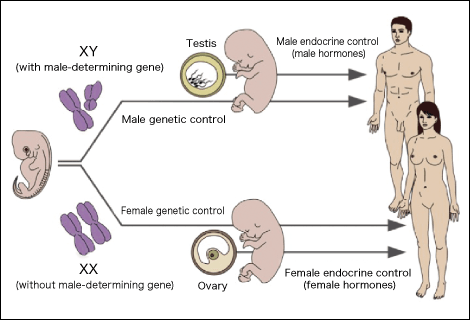
Figure 1. Development from fertilization to adult male/femaleSex is established by genetic control and endocrine control.
The sex of an individual is determined through three steps. The first step is fertilization. The subsequent sex differentiation is determined by whether the fertilizing sperm has a Y chromosome, and whether the fertilized egg has one or two X chromosomes.
Next, sex differentiation of gonads into testes or ovaries takes place. When an early fetus develops to a certain stage, special cell populations that become gonads in the future (gonadal primordia) appear. If a sex-determining gene that is only present on a Y chromosome (SRY [sex-determining region Y] gene) acts in these cells, the cells develop into testes. On the other hand, female gonadal primordia that have no SRY gene differentiate into ovaries. While gonadal primordia have the ability to equally become ovaries or testes, the expression of the SRY gene on the Y chromosome decides their destiny to become testes.
Presence of a male-determining gene
The SRY gene was discovered as a gene that determines the male sex (sex-determining gene) in 1990. A British research team discovered the SRY gene in a Y chromosome. An experiment conducted in the following year showed surprising data that, when an SRY gene was introduced to a fertilized XX egg of a mouse which should have developed into a female, an individual having testes was born. This result underlined the fact that the SRY gene is a gene sufficient and necessary for producing testes, and that gonadal primordia which should develop into ovaries become testes when the SRY gene is introduced.
When we only think about humans, sex seems to be strongly controlled by genes. However, the sex of reptiles such as lizards and turtles is determined by the temperature of the eggs, and sex reversal frequently occurs in fishes. What is more, they gain the reproductive functions of the respective sexes before and after the sex reversal. For example, when an originally male individual undergoes sex reversal, the testes which used to produce sperm change into ovaries and start producing eggs.
The extent to which the testis/ovary functions are maintained after a sex reversal may be deeply related to the evolution of the sex chromosomes. Fish whose reproductive function is maintained even after a sex reversal have sex chromosomes that have not evolved much. For example, the X chromosome and the Y chromosome in the ricefish (Oryzias) are almost the same, except for the sex-determining gene. Therefore, both male and female ricefish have a gene required for producing sperm as well as a gene required for producing eggs, which means that their XX testes can produce sperm, while their XY ovaries can produce eggs. In contrast, a human’s X and Y chromosomes greatly differ. Whereas a human X chromosome has more than 2,000 genes, a Y chromosome has only 60 to 70 genes.
In mammals, many genes required for producing sperm are present on the Y chromosome, so even if a SRY gene triggers development of testes in an XX individual, the testes cannot produce sperm without a Y chromosome. The X chromosome and Y chromosome were originally the same homologous chromosomes as other chromosomes. In other words, the X and Y chromosomes were two identical chromosomes. When a sex-determining gene appeared on a certain homologous chromosome in the evolution process, that homologous chromosome acquired the function as a sex chromosome. At the same time, the Y chromosome became destined to degenerate. In the distant past, the Y chromosome of the organism that produced the sex-determining gene became smaller and smaller. As a result, a human’s X chromosome and Y chromosome evolved into considerably different chromosomes.
Mysterious sex-determining genes
Sex-determining genes are mysterious genes in the first place. Only mammals use the SRY gene as the sex-determining gene, with other organisms using their own specific sex-determining genes. Five kinds of sex-determining genes are known in fish. While genes needed for forming our body organs and tissues, such as the liver and eyes, have been conserved across animal species, sex-determining genes have not been conserved across species despite their role to determine the sex, which is a fundamental function for organisms.
The third step for the determination of sex proceeds through the action of endocrine substances called sex hormones, such as male hormones and female hormones. While a male develops testes and a female develops ovaries, the respective organs not only produce sperm and eggs; they produce sex hormones and make our entire bodies male-like or female-like.
Sex hormones are made in special cells that exist in testes and ovaries, after which they are released into the blood and carried throughout the body, affecting a large number of cells. In addition to such control by sex hormones (endocrine control), all cells have sex chromosomes. A Y chromosome has various genes apart from the sex-determining gene, and it has been pointed out that these genes may be controlling the sex of almost all cells that constitute our body (genetic control). In this manner, we probably should consider that sex is established as a result of interaction between the genetic control and endocrine control.
Then, how do the genetic control and endocrine control coordinate with each other to produce sex difference?
An interesting thing is that there are sex differences in the chromosome (chromatin) structure (Figure 2). For instance, we have come to understand that there are regions where chromatin is condensed in females but is extended in males, or vice versa.
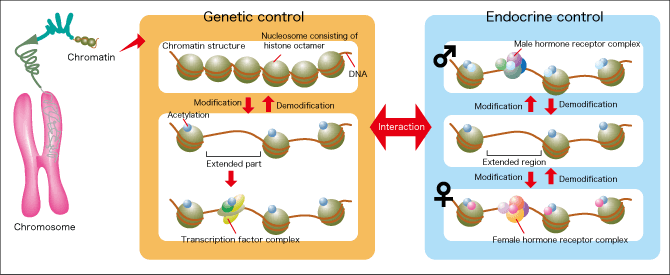
Figure 2. Chromatin structure and sex differenceChromatin is subject to epigenetic regulation. As a result, the chromatin condensation changes, and sex difference occurs at a cellular level. As male hormone receptors and female hormone receptors bind to the respective sexually differentiated regions, the genetic control and endocrine control interact with each other.
Such changes in the chromatin structure are caused by so-called epigenetic regulation.
Epigenetic regulation is an action that turns gene expression on or off, irrespective of the presence or absence of genes. Figure 2 shows chromatin containing genes. Eight proteins known as histones form a complex, and the DNA (gene) wraps around this complex. This structure is called a nucleosome, and chromatin consists of such nucleosomes. It is known that the wrapped-around DNA is being read actively in regions where histones have undergone chemical modification called acetylation.
On such basis, the sex differences in the chromatin structure are considered to be caused by sex differences in the epigenetic regulation. Then, what is the mechanism that creates sex differences in the chromatin structure? Sex chromosomes have many genes apart from the sex-determining gene, and some of these genes are known to relate to the chemical modifications of histones. It is indicated that such genes create sex differences in the chromatin structure, and induce sex differences in the gene expression.
Next, let us think about the endocrine control by sex hormones on the assumption that the chromatin structure has sex differences. Suppose that a male hormone receptor binds to an extended region of chromatin: the genes in that region will be read. The receptor can bind because the chromatin is extended, but cannot do so if the chromatin is tightly condensed. If the state of chromatin condensation/extension differs by sex in regions where sex hormone receptors bind, sex differences will naturally occur in the actions of genes in those regions.
In the 1980s, the presence of sex differences in heart disease drew public attention in the United States, and the concept of gender-specific medicine was born. When I was studying drug/foreign-compound metabolism in my younger days, I used to find it interesting that drug/foreign-compound metabolizing activity differs between males and females.
The testes in males and the ovaries in females represent the most obvious differences between male and female, but there are also other notable differences, such as those in their skeletal muscles. Skeletal muscles, or muscles, apparently differ by sex, with female muscles being round and soft and male muscles being sinewy and hard, whereas each muscle fiber constituting the skeletal muscles is also thicker in males. In addition, while skeletal muscles actively synthesize adenosine triphosphate (ATP), an energy-providing material for the body critical for muscle contraction, male skeletal muscles tend to synthesize ATP by metabolizing sugar, or glucose, but female skeletal muscles tend to synthesize it by metabolizing fat. They are the same organs, but have different structures and characteristics between male and female.
If the chromatin structure has sex differences and this causes sex differences in the ways genes act as mentioned earlier, it would mean that each individual cell has a sex.
The sex of all cells that constitute our body is determined by the genes on sex chromosomes and hormones. Male skeletal muscles are thick and powerful, but when the testes are removed, the skeletal muscles shrink. Conversely, if a female is injected with male hormones, the skeletal muscles grow thick. In other words, sex hormones control the sex differences in our skeletal muscles, and in fact, they can be considered to control the sex of almost all of our cells.
However, some sex differences remain unexplainable. Regardless of how much male hormones are injected in a female, her genes will not demonstrate the same level of functions as the same genes in male. We consider that this may be the effect of genes on the X chromosome and Y chromosome, and are currently conducting research on this issue.
Organisms that are not simply male or female
When we engage in research on sex, we often encounter a state of sex that goes beyond the binary framework of female and male. Pediatricians sometimes see patients with external genital anomaly, but even if the mutated genes were the same, the anomaly of the external genitalia would not necessarily be the same. However, basic research on sex had conventionally defined sex in binary terms. I believe the same applies to general society.
A sex in-between had been considered to have emerged as a result of mutation, and had not been regarded as one form of sex. In the natural world, however, there are sexes that cannot simply be categorized as male or female. A bird species called ruff (Philomachus pugnax) has males, females, and males that look like females while having the ability to reproduce (Figure 3). That is to say, there are individuals which are biologically males, as they produce sperm, but have feather colors and body sizes that closely resemble females. Such organisms with a sex that cannot simply be categorized between male and female are frequently found in the natural world.
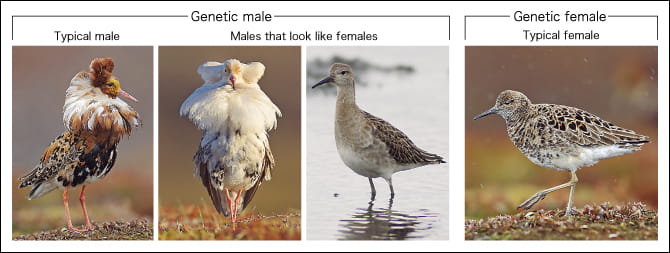
Figure 3. Sex spectrum of ruffSome ruff are genetically male but look different from the typical male. Many such examples can be found in the natural world.(Photographs: Minden Pictures/Aflo, Yasuki Nakajima/Aflo, FLPA/Aflo)
We have traditionally considered sex in binary terms based on what we see superficially, but have come to presume that sex actually cannot be divided so clearly, and it could exhibit a continuity of phenotypes between female and male (sex spectrum) (Figure 4). We assume that there must be individuals, organs, and cells that are not only in a state of male or female, but are also in a state of male with many female characteristics or female with many male characteristics.

Figure 4. Schema of sex spectrumSex can exhibit a phenotype in-between female and male, and can be in a state of flux between a typical female and male.
In order to establish the concept of a sex spectrum, we need to quantitatively compare the extent to which each individual cell is male or female. We are advancing research on a sex spectrum from the standpoint that we basic researchers should discuss this subject by quantitatively comparing specific biological characteristics.
There are diseases for which the prevalence and symptoms clearly differ between the sexes, such as heart disease, osteoporosis, and autoimmune disease. In engaging in basic research on sex difference, I sometimes get an impression that males and females are completely different animals.
But, I think that one would not have an understanding of an organism, be it a human or a ricefish, without understanding both the male and female characteristics of that organism, and the wide spectrum in-between the state of male and female.









